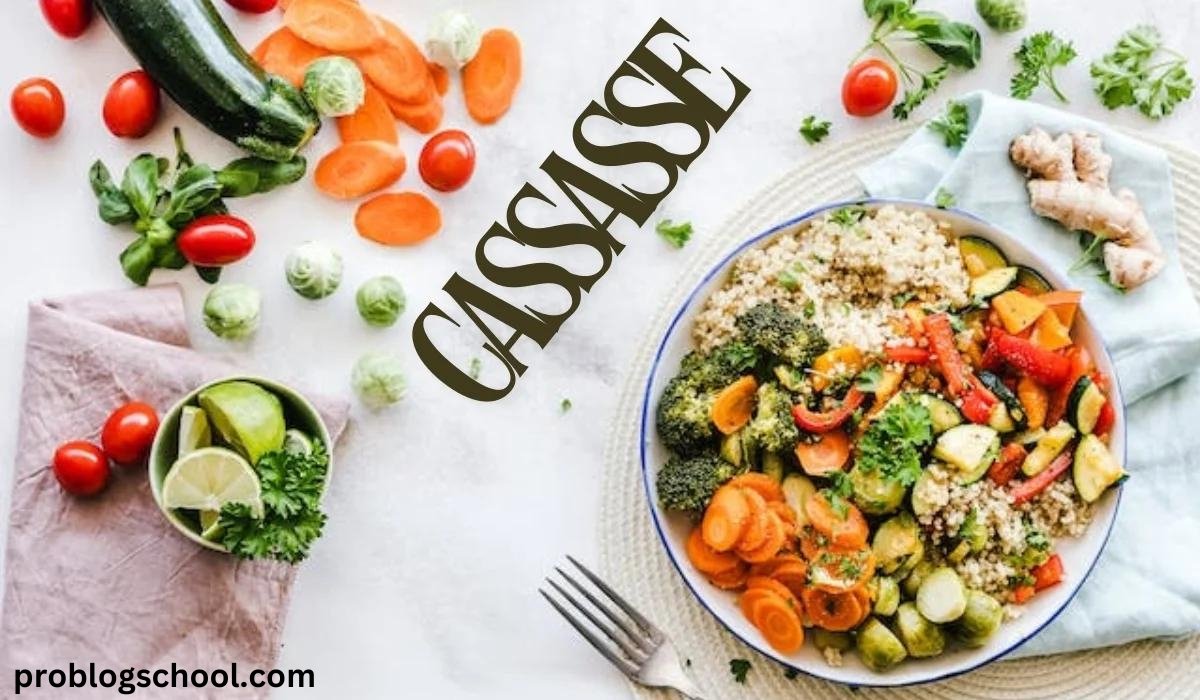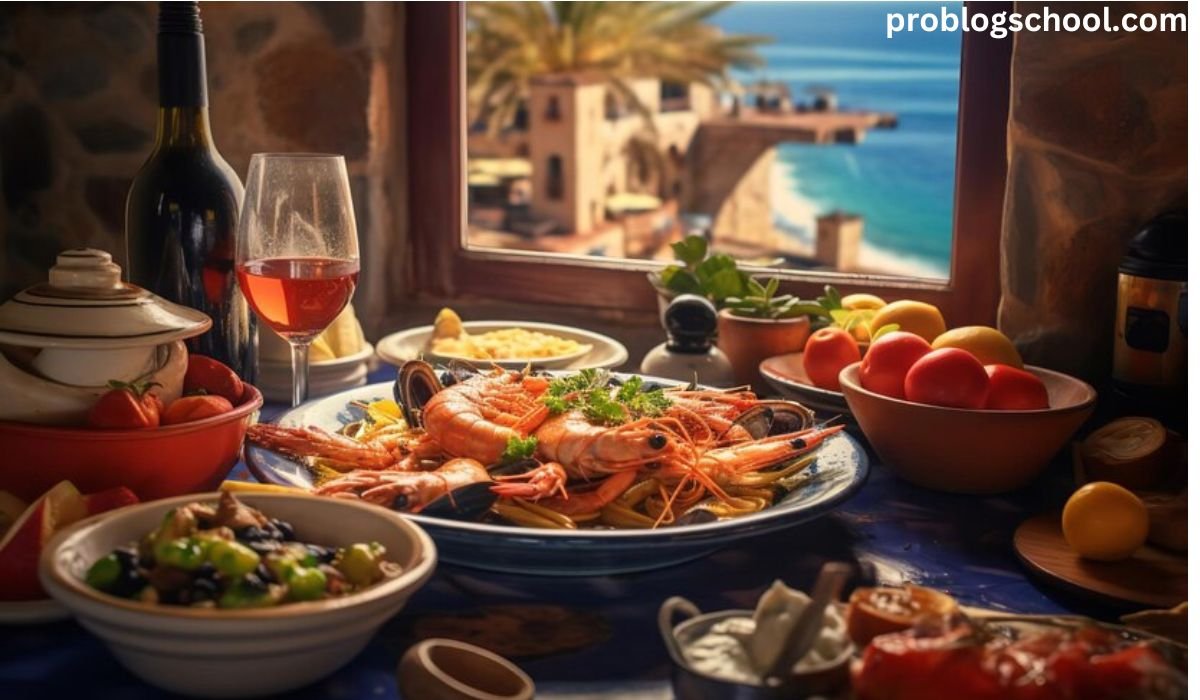Introduction
Imagine indulging in a dish that tantalizes your senses with its rich, savory flavors and aromatic spices, leaving you craving more. Cassasse is a culinary masterpiece that perfectly balances tradition, flavor, and versatility. It’s a dish that has deep cultural roots and has evolved over time to fit various palates and dietary needs. Whether you are a food enthusiast or someone looking for a wholesome, nutritious meal, cassasse will undoubtedly leave a lasting impression.
Cassasse is a versatile and flavorful dish with a rich culinary history. This article delves into the world of cassasse by exploring its origins, ingredients, and the art of preparing it, as well as its variations and modern adaptations. Whether you’re new to cassasse or a seasoned fan, this guide will offer something for everyone.
Understanding Cassasse
What is Cassasse?
Cassasse is a flavorful, slow-cooked dish traditionally made with meat, vegetables, and spices, simmered until tender and packed with flavor. Its texture can range from stew-like to more solid depending on how it is prepared. Cassasse often features bold and earthy flavors, with seasonings that may vary based on regional influences.
Origin and cultural significance
Cassasse has deep roots in various cultures, particularly in regions where slow-cooked, hearty meals are a staple. Often regarded as comfort food, it has been prepared in households for centuries, primarily passed down through generations. It is enjoyed at family gatherings, celebrations, and during festive seasons. In many communities, the preparation of cassasse is a group activity, symbolizing unity and family bonds.
Key Ingredients
Cassasse can be made with a variety of ingredients, but some essential components are commonly used to give it its distinctive flavor and texture.
- Meat: Traditionally, cassasse includes chicken, beef, or pork, depending on regional preferences.
- Vegetables: Root vegetables such as carrots, potatoes, and onions are common, but leafy greens or peppers can also be added.
- Spices and herbs: Garlic, thyme, bay leaves, and paprika are frequently used to enhance the flavor of the dish.
- Broth: A rich stock or broth is typically used to cook the ingredients slowly, resulting in tender meat and well-blended flavors.
Substitutions and alternatives
For those who prefer a meat-free version, cassasse can easily be adapted by using plant-based alternatives such as mushrooms, tofu, or jackfruit. The vegetables and spices can remain the same, and a vegetable broth can replace the meat stock. Gluten-free versions can be created by ensuring that all the ingredients, including the broth, are gluten-free.
Nutritional Value
Health benefits of cassasse
Cassasse is not only a flavorful dish but also packed with nutrients. The variety of vegetables adds a wealth of vitamins and minerals, while the slow-cooking process helps to retain the nutrients in the meat or plant-based proteins.
- Rich in protein: Depending on the meat or plant protein used, cassasse is a good source of protein, which is essential for muscle growth and repair.
- Full of fiber: The vegetables provide fiber, which aids digestion and helps in maintaining a healthy gut.
- Low in fat: If made with lean cuts of meat or vegetarian alternatives, cassasse can be relatively low in fat, making it a heart-healthy option.
Allergen information
Cassasse can be easily modified to accommodate various dietary restrictions. For those with allergies to certain proteins, vegetarian or vegan versions can be prepared. For gluten allergies, it’s crucial to check that the broth and spices used are certified gluten-free.
The Art of Preparing Cassasse
Traditional Cassasse Recipe
Preparing cassasse is a time-honored process that requires patience, but the end result is well worth the effort. Below is a step-by-step guide to making a traditional version of cassasse.
- Gather ingredients: Choose your preferred meat (chicken, beef, or pork) and vegetables such as carrots, potatoes, and onions. Don’t forget the key spices like garlic, thyme, and bay leaves.
- Sear the meat: In a large pot, heat some oil and sear the meat until it’s browned on all sides.
- Add vegetables: Toss in the chopped vegetables, allowing them to soften and absorb the flavors of the meat.
- Season generously: Add your garlic, thyme, paprika, and other spices to the pot.
- Simmer in broth: Pour in enough broth to cover the ingredients and bring the mixture to a simmer. Cover the pot and allow it to cook slowly for 2-3 hours.
- Serve: Once the meat is tender and the flavors have melded together, cassasse is ready to be served.
Tips for achieving the perfect flavor
- Marinate the meat: For a richer taste, marinate the meat in the spices and herbs for a few hours before cooking.
- Low and slow: The key to a flavorful cassasse is cooking it slowly over low heat, allowing the flavors to develop fully.
- Taste and adjust seasoning: Taste the broth periodically and adjust the seasoning as necessary.
Cassasse Variations
Cassasse is a versatile dish, and there are many regional and cultural variations. Depending on where it’s made, cassasse can take on different flavors and textures.
- Sweet cassasse: Some versions incorporate dried fruits such as apricots or raisins, adding a subtle sweetness to the dish.
- Savory cassasse: A more traditional version uses robust spices like paprika and garlic for a savory punch.
- Spicy cassasse: In certain regions, cassasse is made with hot peppers or cayenne for those who enjoy a bit of heat.
Cassasse for Different Diets
Cassasse can be adapted to suit different dietary needs, making it a dish that everyone can enjoy.
- Vegetarian or vegan cassasse: Replace the meat with mushrooms, jackfruit, or tofu, and use vegetable broth instead of meat stock.
- Gluten-free cassasse: Ensure that the broth and any other pre-packaged ingredients used are gluten-free.
- Low-carb cassasse: Swap out the potatoes for cauliflower or other low-carb vegetables to make the dish more suitable for low-carb diets.
Enhancing Your Cassasse Experience
Pairing Cassasse with Beverages
Cassasse is a robust dish with deep flavors, so it pairs well with a variety of beverages.
- Wine: A bold red wine such as Cabernet Sauvignon complements the richness of the dish.
- Beer: A light or medium-bodied beer can balance out the flavors of cassasse.
- Non-alcoholic drinks: For a refreshing contrast, try pairing cassasse with a sparkling water infused with lemon or a chilled herbal tea.
Complementary flavor profiles
When planning a cassasse meal, consider complementary side dishes that will enhance the flavor of the dish, such as crusty bread, a fresh salad, or roasted vegetables.
Cassasse as a Main Course or Side Dish
It can be the star of your meal or a hearty side dish.
- Main course: Serve cassasse over rice or alongside steamed vegetables for a complete, nutritious meal.
- Side dish: Pair cassasse with roasted meats or fish as a flavorful and filling side dish.
Cassasse in Modern Cuisine
As the culinary world evolves, cassasse has found its way into modern kitchens, inspiring new and innovative dishes.
- Fusion dishes: Chefs are experimenting with cassasse by incorporating global flavors such as Asian spices or Mediterranean herbs.
- Cassasse-inspired restaurant offerings: Many modern restaurants are offering cassasse as a featured dish, putting their own unique twist on the traditional recipe.
Cassasse: A Culinary Treasure
Cultural Significance
Cassasse holds a special place in the culinary traditions of many regions, often being served during important celebrations or holidays. Its preparation is seen as a way to bring people together, and the dish itself symbolizes comfort and togetherness.
Cassasse Community
In today’s digital age, the cassasse community is thriving online. From forums to social media groups, food lovers are sharing their recipes and experiences with cassasse, celebrating its timeless appeal.
Preserving Cassasse Heritage
As cassasse continues to gain popularity, efforts are being made to preserve its traditional roots. Many cultural organizations are working to protect the heritage of cassasse, ensuring that its preparation and significance are passed down to future generations.
You May Also Like: Pollaste Variations Across Cultures: Global Flavor Profiles
Conclusion
Cassasse is much more than just a dish; it is a culinary treasure that has withstood the test of time. With its rich history, versatile ingredients, and ability to adapt to modern tastes, cassasse is a meal that everyone should experience. Whether you’re preparing it for the first time or perfecting your own recipe, cassasse is sure to delight your senses and bring warmth to your table.
FAQs
What is cassasse?
Cassasse is a traditional slow-cooked dish made with meat, vegetables, and spices, known for its rich flavors and cultural significance.
What ingredients are used in cassasse?
Typical ingredients include meat (chicken, beef, pork), root vegetables, garlic, thyme, bay leaves, and a flavorful broth.
Is cassasse a healthy dish?
Yes, cassasse is nutritious, offering protein, fiber, and essential vitamins from its combination of meat and vegetables.
Can cassasse be made vegetarian or vegan?
Absolutely! You can substitute meat with mushrooms, tofu, or jackfruit and use vegetable broth to create a vegetarian or vegan version.
What drinks pair well with cassasse?
Cassasse pairs well with bold red wines like Cabernet Sauvignon, light beers, or non-alcoholic options like sparkling water with lemon.











